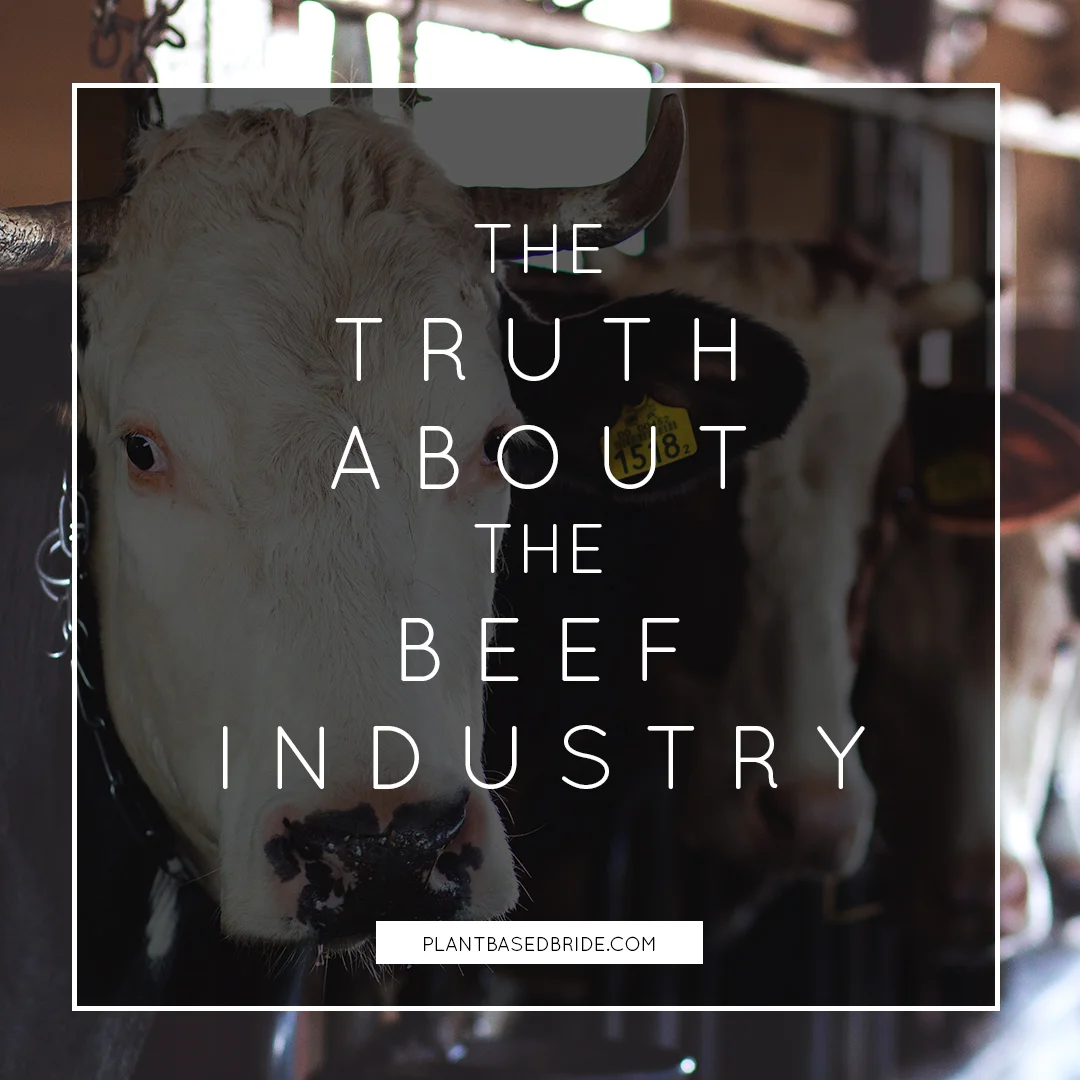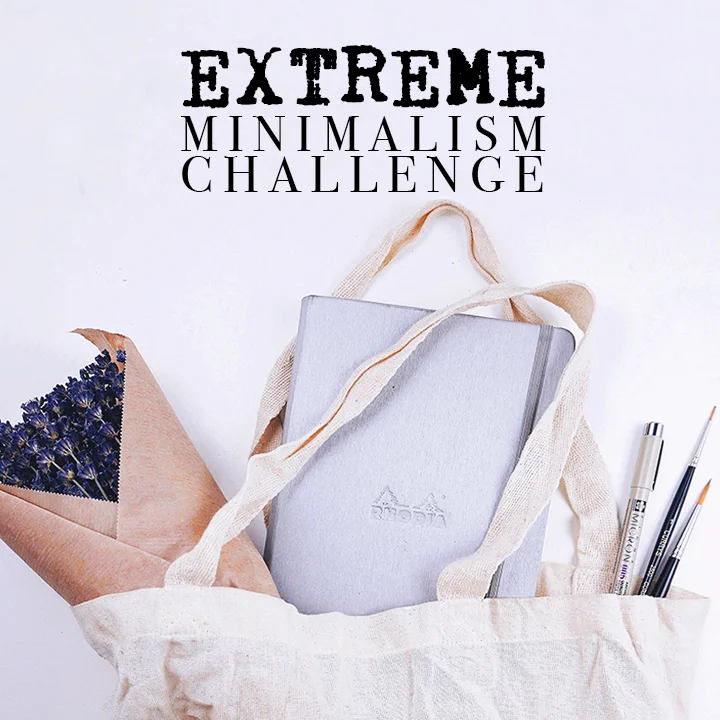
the blog.
The Truth About The Beef Industry
Unlike most animal foods, many people are not only aware of the negative impact of eating beef on their health but actively avoiding it - and they're right to.
But it's not just for health reasons that beef is a bad choice. The raising of cattle has more of an environmental impact than you might realize, and is definitely no fun for the cows.
Let's explore the truth behind the beef industry.
Unlike most animal foods, many people are not only aware of the negative impact of eating beef on their health but actively avoiding it - and they're right to.
But it's not just for health reasons that beef is a bad choice. The raising of cattle has more of an environmental impact than you might realize, and is definitely no fun for the cows.
Let's explore the truth behind the beef industry.
HEALTH
For a long time beef was seen as a 'super food', and I can understand the thought process, however misguided. Not only is beef a concentrated source of calories (which we were in dire need of for the majority of the centuries we have existed on earth) and high in protein, which we all know is the most important macronutrient. Or is it?
The Real Rundown On Protein
Dr. Garth Davis does an incredible job of debunking the protein myths in his book Proteinaholic, and I would highly suggest giving it a read for more in depth information. In the meantime, let me summarize some of the points that stood out to me the most:
You Don't Need As Much Protein As You Think
While it is true that protein is essential for human health, we don’t need nearly as much of it as we think we do. The World Health Organization published a technical report in 2002 titled Protein and Amino Acid Requirements in Human Nutrition in which they concluded that the average healthy adult of either gender requires a minimum of 0.66g of protein per day per kg of lean body weight. For example, a 150lb (68kg) person would need 44.9g of protein per day to meet the minimum of their daily protein needs - IF they had no fat on their body (not likely). They also recommend adding a buffer to guarantee "safe levels" of protein intake per day, which brings their daily recommendation up to 0.83g per kg of lean body weight. This would translate to the same 150lb (68kg) person requiring 56.4g of protein per day (once again, if they had no fat on their body. It is far more likely that their lean body mass would fall in the range of 90 to 130 lbs or approximately 41 to 59 kg. This person would actually only require 34 to 49g of protein a day, even at the higher protein recommendation.)
Surely, though, more is better? We certainly don’t want to be deficient in this important macronutrient. Dr Garth Davis hit the nail on the head when he said: “In all my years in medicine I have never, ever, seen a patient who was suffering from protein deficiency. I have searched the medical literature and cannot find a single case of protein deficiency in someone eating adequate calories.” In other words, if you are eating enough calories, you will get enough protein.
But what if we want to be on the safe side? Get just a little bit extra? That’s not really a good idea. Unlike fat and carbohydrates, the body doesn’t have a storage system for excess protein. It will instead be converted into fat or broken down into potentially toxic nitrogen components.
Animal Protein Isn't Actually Superior To Plant Protein
You may have heard of essential amino acids. These are the 9 amino acids the human body cannot create on its own, meaning they must be ingested on a regular basis. These nine essential amino acids are:
- histidine
- isoleucine
- leucine
- lysine
- methionine
- phenylalanine
- threonine
- tryptophan, and
- valine
You may have also heard that plant protein is not ideal as each individual type of plant does not contain all of the essential amino acids. This is what lead to the ‘complete protein’ craze. As meat and dairy products contain all nine, they were seen as superior sources of protein. However, it has been proven time and time again that not only do plants in their vast variety contain all of the nine essential amino acids, but that all nine do not need to be ingested at the same meal for our bodies to utilize them and synthesize important proteins. So while eating rice with beans is delicious, you needn’t eat them at the same time for your body to use the amino acids provided.
As long as you are getting a balance of amino acids over the course of the day (as in eating a variety of plant foods) your body is more than able to combine them as required for various necessary functions. There is no need to pair proteins or worry about combining foods to create complete proteins at every meal.
To doctors before the mid 20th century, animal protein must have seemed like a miracle cure. It was great at helping people to gain fat, allowing them to survive famine, resist death from infectious disease, withstand hard labour, and to live in harsh conditions. Plus, since the population rarely survived past 50 years old, any long-term negative effects of animal protein consumption had no chance to develop.
Unfortunately, nowadays we live far more sedentary lives. We live in temperate conditions protected by vaccines and with constant access to calorie-dense foods. We live well into our 80s and beyond - ample time to suffer from the less-than-ideal health impacts of too much animal protein.
We now know that we needn’t worry about getting ‘complete proteins’ so long as we ingest all of the nine essential amino acids over the course of the day. Luckily, plant foods have amino acids in abundance.
Despite this abundance, many still believe that animal protein is superior. The fact is, in essentially every well-conducted study, animal protein is associated with a long list of unwanted health defects. This list includes weight gain, diabetes, hypertension, heart disease, cancer, osteoporosis, inflammatory bowel disease, rheumatoid arthritis, gall bladder disorders, kidney stones, irritable bowel syndrome, and gout. This is due to the high cholesterol (completely absent from animal foods), saturated fat (all but absent from animal foods, other than coconuts), and uric acid found in animal protein.
An example of this effect of animal protein can be found in the people of Tunisia. From 1997 to 2009, a mere 12 years, deaths from heart disease increased 17% accompanied by an increase in cholesterol, blood pressure, and a staggering 74% increase in the obesity rate. The catalyst? The population increased their animal protein consumption from 14% all the way up to 27% of total daily calorie intake, as they transitioned from a high carbohydrate diet low in protein (with a focus on grains) to a high protein diet, doubling their milk and meat intake.
The People Who Live The Longest Don't Eat Meat
Have you ever heard of the Blue Zones? Dan Buettner’s 2010 book summarized his findings after having spoken to the groups of people with the highest longevity in the world. It is estimated that many of the blue zones (whose inhabitants often live healthily for over a century) get 70-80 % of their calories from carbohydrates, 10-15% from protein, and 8-12% from fat, which is far less than the protein intake many Westerners are aiming for of over 30%.
Do you know the kind of diet that easily lands between 10-15% protein and remains low fat? A whole foods plant based, aka vegan, diet.
Check out Proteinaholic for even more mind-blowing protein facts!
Saturated Fat
Beef is not only full of animal protein (which has been linked to cancer and a host of other diseases) but is absolutely swimming in fat, most of which is saturated.
Despite the resurgence of claims that saturated fat is good for our health, I'm going to have to burst your bubble on this one. It's not. And deep down, everyone knows it.
Consumed in high quantities (such as those found in meat) results in inflammation, higher blood cholesterol, and an increased risk of diabetes, heart disease, and cancer. As you might recall, the blue zones averaged a total fat intake of 8-12%, which is consistent with a low fat vegan diet.
Fibre
If this wasn't enough, meat contains no fibre whatsoever. Fibre is known to:
- help control blood glucose;
- reduce the risk of obesity due to its ability to increase satiation;
- regulate bowel movements;
- manage blood pressure and cholesterol (reducing the risk of heart disease), and;
- reduce the risk of cancer. (read this post for more on fibre)
So while the meat you eat is increasing your risk of dying of cancer or heart disease due to it's animal protein and high saturated fat and cholesterol content, it's also crowding out the high fibre foods from your diet that actually have the power to protect you against those very fatal diseases!
Cholesterol
It has been established that cholesterol is a significant risk factor for heart disease. But did you know that only animal products contain cholesterol? It's true that we need a small amount of cholesterol for our bodies to function normally, but we actually synthesize the cholesterol we need internally. Any we take in through our diet is in excess of our cholesterol requirements.
A clear example of this effect was observed by Dr. William Castelli, who found that amongst tens of thousands of people a heart attack never occurred in someone with a total cholesterol under 150. For reference, in the US the average cholesterol level is 210, the average for vegetarians is 161, and the average for vegans is 133.
Want more proof?
- Poland: After the Berlin wall came down, the consumption of meat dropped significantly while fruit intake increased. What happened as a result of this dietary change? A 24 percent drop in cardiac mortality.
- Finland: Once they had the highest levels of heart disease in the world, but in 1972 they began their 'North Karelia' project in which they decreased their fat intake by drastically reducing the consumption of sausage and butter and switching to vegetable oils and low-fat milk, increased fruit and vegetable intake, and cut out smoking. The result? An 80% drop in heart disease and a life expectancy increase of 7 years.
- Postmenopausal Women: A statistical analysis was conducted on 29,000 postmenopausal women over a period of 15 years. The finding? Replacing animal protein with plant protein lowered the risk of developing heart disease by 30% and replacing carbohydrates with red meat increased the risk by 33%.
- The Harvard Review: In 2014 the review demonstrated that those who have suffered a heart attack and adopt a high protein/low-carb diet are at a much higher risk of dying from their heart disease than someone consuming a high plant protein diet. The chair of Harvard’s Department of Nutrition, Dr. Walter Willet, has since stated that people should emphasize plant sources of protein rather than animal sources.
Iron
Most people are under the impression that heme iron (from animal sources) is better utilized by the human body than non-heme iron (from plant sources), and therefore a superior choice.
This is, however, just a tiny portion of the whole picture.
Yes, heme iron is the kind of iron our bodies use, and therefore the heme iron we consume can be utilized immediately without conversion. People tend to forget, however, that non-heme iron is easily converted to heme iron in our bodies and is no less suited to our needs.
Not only this, but people are completely unaware of the negative impacts the consumption of heme iron has on our bodies. Heme iron causes oxidation and is directly associated with the development of heart disease as two separate studies found in 2013. The oxidation that occurs as a result of heme iron intake also affects the pancreas' ability to secrete insulin, which can lead to diabetes. These effects are not observed with the intake of non-heme iron from plant sources.
ENVIRONMENT
If you haven't already watched Cowspiracy, allow me to suggest that you put aside 90 minutes of your day and do it! The documentary does a great job of demonstrating the effects of animal agriculture on the environment and the statistics and facts they share are absolutely staggering.
Let me give you just a taste of the shocking information they bring to light in the film (from cowspiracy.com/facts):
'Livestock and their byproducts account for at least 32,000 million tons of carbon dioxide (CO2) per year, or 51% of all worldwide greenhouse gas emissions.'
'Cows produce 150 billion gallons of methane per day.'
'Methane is 25-100 times more destructive than CO2 on a 20 year time frame.'
'Livestock is responsible for 65% of all human-related emissions of nitrous oxide – a greenhouse gas with 296 times the global warming potential of carbon dioxide, and which stays in the atmosphere for 150 years.'
'Emissions for agriculture projected to increase 80% by 2050.'
These numbers may give you pause, but never fear - reducing worldwide methane emissions by reducing the amount of animals raised for livestock drastically can make an almost immediate positive impact on reducing greenhouse gasses in our atmosphere.
But animal agriculture doesn't just effect our atmosphere.
It also has an effect on our water supply...
'2,500 gallons of water are needed to produce 1 pound of beef. ' (this is a conservative estimate and is the equivalent of showering for 2 months)
'Animal Agriculture is responsible for 20%-33% of all fresh water consumption in the world today. '
...and on our land.
'Livestock covers 45% of the earth’s total land.'
'Animal agriculture is the leading cause of species extinction, ocean dead zones, water pollution, and habitat destruction.'
'1/3 of the planet is desertified, with livestock as the leading driver.'
'Livestock operations on land have created more than 500 nitrogen flooded deadzones around the world in our oceans.'
'In the U.S. livestock produce 116,000 lbs of waste per second.'
'Animal agriculture is responsible for up to 91% of Amazon destruction.'
'1-2 acres of rainforest are cleared every second.'
'Up to137 plant, animal and insect species are lost every day due to rainforest destruction.'
So meat isn't good for our health, and it isn't good for the environment. What about the animals?
ETHICS
Life on a factory farm is no walk in the park, as you already know. But the thing is, even traditional farms are full of inherent cruelty. If we ignore the crowding of cows by the thousands in mud and feces filled lots, a traditional farm looks a whole lot like a factory farm.
They may not intentionally abuse the animals, but they:
- dehorn them (calves only a couple of weeks old will have their horn buds burned or cut out of their heads without anesthetic);
- brand them (a hot iron is placed on unanesthetized skin causing third degree burns and permenant hair loss in the area);
- castrate them (testicles of young male calves are ripped from their scrotums, without pain relievers);
- shoot them full of antibiotics to prevent disease (80% of antibiotic sold in the US are used on livestock);
- feed them unnatural diets meant to fatten them up quickly (which results in fatal liver abscesses is as many as 32% of cattle and chronic digestive pain and impaired breathing due to bloating);
- force them to breathe air that is saturated with the same gasses that cause global warming (ammonia, methane, and other noxious chemicals from manure and flatulence - giving cows chronic respiratory problems);
- keep them in environments they aren't well suited for (where they freeze to death in the winter in montana, nebraska, and north dakota and suffer heat stroke in texas and arizona in the summer), and, finally;
- kill them brutally at a young age (after as little as one year of their 20 + year projected life span, cows are sent in crowded trucks through weather extremes to the slaughterhouse where, if they have not died in transit, they will be 'shot in the head with a captive-bolt gun and hung up by one leg then have their throats cut before finally being skinned and gutted. Some cows remain fully conscious throughout the entire process. In an interview with The Washington Post, one slaughterhouse worker said, “They die piece by piece.”'). This fate is the same for every cow, whether it lived it's life crowded and sick or 'free' on the range.
Remember that cows are gentle, intelligent animals. They are curious, social, and form deep and complex relationships with other cows. They also go to extreme lengths to escape from slaughterhouses.
Perhaps they don't want to die?
If the pain and suffering of the animals isn't enough for you, what about the pain and suffering of people around the world?
World Hunger
Many people claim that eating animals is important for feeding our growing population, but in fact eating animals filters plant foods through animals and produces less food to feed people around the world.
Let me show you what I mean.
The human population on earth as of today is 7,436,280,970, and grows by around 228,000 people every day.
Around 795,000,000 people (one in nine) don't have enough food to live a healthy, active life.
We are currently growing enough plant based food to feed 10 billion people (1.35x our current population).
So where's the disconnect?
Worldwide, at least 50% of grain harvested is fed to livestock and 82% of starving children live in countries where food is fed to animals who are shipped to Western countries to be eaten.
We have enough plants to feed every single human on earth, but rather than doing that we feed half of it to animals producing 98 times less food to go around.
Say you had one acre of land.
That acre could feed 6 vegans, 2 vegetarians, or 1/3 of a meat eater for a year.
Which allows for more resources to feed the hungry?
1.5 acres can produce 37,000 pounds of plant-based food, or 375 pounds of meat.
Still worried about your protein? (Did you skip over the health section of this article??)
Well, 15x more protein can be produced on any given area of land with plants, rather than animals.
A person who follows a vegan diet produces the equivalent of 50% less carbon dioxide, uses 1/11th oil, 1/13th water, and 1/18th land compared to a meat-eater for their food and saves 1,100 gallons of water, 45 pounds of grain, 30 sq ft of forested land, 20 lbs CO2 equivalent, and one animal’s life each and every day.
Perhaps the right choice for your health, the animals, our world, and the hungry people on it is to go vegan?
Until next time,
I have not included any graphic video in this post, but if you are interested in seeing what really goes on I would suggest watching Earthlings.
The Difference Between Plant Based & Vegan
With the rise of the use of the term 'Plant Based', the waters are getting a little muddy. Are plant based and vegan the same thing? Can you be both? Are they mutually exclusive?
Let's talk about the difference between plant based and vegan.
With the rise of the use of the term 'Plant Based', the waters are getting a little muddy. Are plant based and vegan the same thing? Can you be both? Are they mutually exclusive?
Let's talk about the difference between plant based and vegan.
Watch the video here or on YouTube!
What are your thoughts on the matter? Let me know in the comments below!
Until next time,
Let's Start A Book Club!
I LOVE reading. But somehow I feel like I never have time anymore. I've decided that I need to make reading a priority again and that's why I'm starting a book club!
I LOVE reading. But somehow I feel like I never have time anymore. I've decided that I need to make reading a priority again and that's why I'm starting a book club!
I would love to have you join the club so that we can share our favourite reads and discuss our thoughts on the books we explore!
I know you have so much to share and I can't wait to learn from you :)
Check out the video here or on YouTube and comment below to let me know if you're interested in being a part of it and what book we should read next!
Book #1: Proteinaholic by Garth Davis, M.D.
Go pick up the book and get started!
Also, let me know if I should start a facebook group for us!
Until next time,
How To Read Labels As A Vegan
You realize when you go vegan that reading labels is something you just kind of have to do. But if you're like me, someone without allergies or intolerances, you may have never actually done it before. After 4 years and hundreds of ingredients lists, I think I'm ready to share my tips for getting past the gibberish and down to the heart of the matter - is this thing vegan or not!?
You realize when you go vegan that reading labels is something you just kind of have to do. But if you're like me, someone without allergies or intolerances, you may have never actually done it before. After 4 years and hundreds of ingredients lists, I think I'm ready to share my tips for getting past the gibberish and down to the heart of the matter - is this thing vegan or not!?
TIP #1 Clarify Your Personal Definition of Veganism
You probably already know the official definition of veganism:
Veganism is a way of living which seeks to exclude, as far as is possible and practicable, all forms of exploitation of, and cruelty to, animals for food, clothing or any other purpose.
And the products most vegans avoid:
- Meat (including fish);
- Dairy (including all milk, cheese, butter, yogurt, etc.);
- Eggs;
- Honey;
- Leather, Wool, Silk, and other materials made from animals;
- And any ingredient or by product from an animal. (See a more complete list here).
But what is your own personal definition of veganism? Why are you doing this? What does practical and possible look like for you, in your life, today?
I'll give you mine as an example:
I am vegan first and foremost for the animals. At this point in my life, after more than 3 years as a vegan, I am comfortable holding myself to the high standard of purchasing only vegan and cruelty-free products in all aspects of my life, whenever at all possible. This means that I will never purchase (for myself or others) any product of any kind that I know to contain animal products or to have been tested on animals.
But if you'd asked me 6 months into it? I was focused on the food, and not much else. I wasn't ready to consider my makeup, my personal care products, my shoes. These aspects of my veganism came later. And that's ok! It's a journey, and it doesn't have to happen overnight. (No matter what anyone says).
So go ahead and write down your definition of veganism. Where are you in your journey? Are you willing to eat something that 'may contain: milk' or is that an absolute no-no? Only you can answer that question, for who you are in this precise moment. The more comfortable you feel with where you are in your journey, the easier sorting through labels will become!
TIP #2 Eat Whole Foods
This may be a bit of a no brainer; but the more whole foods you eat, the fewer ingredients lists you'll have to sift through. Check out my post on the vegan food pyramid or watch my what I eat in a day video for ideas of what I mean... there are thousands of edible plant foods on the planet to enjoy, no processing required!
Now, while I recommend eating whole foods as much as possible, I’m a realist. I know that from time to time you’re going to want to eat mock meats, mylk, cheeze, or vegan ice cream - especially during your transition period! You aren’t going to live the rest of your life without buying a packaged food (Or a hundred. No judgement here!) The vast majority of my diet when I first went vegan was daiya (dairy-free cheese), so I feel ya. So let's get into figuring our if that delectable packaged vegan treat is, in fact, vegan.
TIP #3 Read The Ingredients
Twice.
In all seriousness, determining if a product is vegan is all about that ingredient list. It may seem tedious, but I promise you’ll get used to scanning down the whole list and making note of any animal products - and it will only take you a few moments!
As you read the list, keep an eye out for the obvious offenders:
- Any kind of meat or meat broth;
- Milk or dairy of any kind (including butter);
- Honey, and;
- Eggs.
After the first scan, I go through again with a fine toothed comb. Unfortunately, animal products and byproducts are widely utilized and have a multitude of names. For this reason I have compiled a (as complete as possible) non-vegan ingredients and materials list for you to print, screenshot, or bookmark to take with you to the store until you get used to which ingredients come from animals.
See the full non-vegan ingredients list here (and try not to get overwhelmed!!)
Remember to ALWAYS read the ingredients, even on a product you’ve bought and verified before. Formulas and recipes change, and mock animal products aren’t always vegan. (It doesn’t make sense to me either). I use this as further incentive to eat whole foods that don’t have ingredients lists for me to read!
TIP # 4 Do Your Research
Get down to it and do some research. Find out which companies are entirely vegan or vegan friendly (this goes for clothing, makeup, and all other consumables too - don't worry, I'll be covering them soon!)
It's also a great idea to join some vegan facebook groups and find out which products others depend on. Need a marinara sauce without parmesan? I'm sure someone has found the perfect one! If you're having trouble finding the question with trusty google, don't feel bad asking other vegans for help. I can only speak for myself, but I'm always willing to lend a helping hand!
The more you know before you head into the grocery store, the easier it will be.
TIP #5 Keep In Mind These Tricky Foods
Sometimes something looks vegan, the ingredients check out, but it actually isn't. How can that be?
Unfortunately, numerous products are processed using animal byproducts that don't (or at least aren't meant to) end up in the final product. These processing agents don't need to be listed as ingredients, leaving consumers in the dark. This is another reason why research is so darn important!
Some common ones to be aware of:
- Beer (sometimes filtered using a membrane derived from fish bladders);
- Sugar (sugar cane is processed with bone char from cows. Buy organic or beet sugar to avoid this!);
- Vitamin D fortified foods (the vitamin D is often derived from sheep's wool), and;
- Apple juice (may be clarified using isinglass, which comes from the dried swim bladders of fish).
Check out my post on Surprising Non-Vegan Foods for 21 more examples!
TIP #6 Don't Forget The 'May Contain'
This part is kind of up to you. Often the foods included in this list are not included in the product but may be found in the same factory, meaning cross-contamination could occur. Those with fatal peanut allergies avoid anything with peanuts or even a possible trace of them, but as a vegan it’s up to you.
Think back to your personal definition of veganism and decide where you stand, at least for now.
For the first 6 months or so of my transition I didn’t worry about this part. I made sure the ingredients were vegan and that was it. But the longer I’ve been on this lifestyle the more I’ve avoided products with even possible cross-contamination of animals foods. This is my preference, and my choice. You do what makes sense to you!
TIP #7 Is It Cruelty-Free?
Let's talk about beauty and personal care products.
For these products you'll follow the same general principle as with food (aka read the ingredients!), with one added factor… it may be vegan, but is it cruelty-free?
The easiest way to find out if a company or product is cruelty-free is to look at their website or check the Logical Harmony list, which is updated weekly (and very complete!).
What does cruelty-free mean? Cruelty-free means that the product and the individual ingredients within it have not been tested on animals.
Why don't we want to support animal testing as vegans?
Here is an excerpt from a blog post I wrote in December:
Why should we care?
I don't know about you, but I care about the other living beings on this planet. Not only will I not contribute to animal suffering of any kind, I also want to help end it for good. More than 100,000 animals suffer and die each and every year due to animal testing for the cosmetics industry. This can not be allowed to continue!
Bunnies, guinea pigs, mice, rats, and hamsters are shaved to have chemicals rubbed on their bare skin, have chemicals dripped into their eyes, and are force fed huge amounts of a chemical to determine the fatal dose. These tests can (and often do) lead to birth defects, blindness, intense pain, convulsions, internal bleeding, organ damage, and death.
They are not given any form of pain relief and at the end of the test they will be killed (often by asphyxiation, having their neck broken, or decapitation).
Learn more about the cruelty and scientific limitations of animal testing here.
Something else to keep in mind - even if a brand says they don’t test on animals on their website: if they sell their products in China their products will be tested on animals, with no exceptions. China requires it. Even if they don't conduct any animal testing on their own, if they choose to sell to the Chinese market their products WILL be tested on animals.
TIP #8 Clothing
What about consumables that don't come with ingredient lists like clothing, shoes, and other accessories?
Clothing should always have a tag breaking down the materials and the percentages of their use in the piece. Scan this looking for any kind of leather, wool, suede, silk, or fur. Remember that my Non-Vegan Ingredients List also covers materials used in clothing!
Footwear should also come with either a sticker, a tag, or with the information printed right onto the lining material. It will indicate the material used for the upper, the lining, and the sole using one of four material symbols:
Leather
Coated Leather
Textile
Other Materials
Leather and coated leather are, of course, not vegan options.
Textiles include any kind of fabric, which may or may not be vegan. It is always important to double check that no kind of silk or wool has been used in the shoe!
Other materials indicates man-made materials, and is all but guaranteed vegan.
One last thing to worry about with shoes is the glue used in their production. It can be difficult to verify the origins of the specific glue used, but an email to the company should wield quick results!
Sometimes accessories won't have any kind of labelling. In this case you will have to do some digging to find out more about the company and that individual product to discover the origins of the materials. Remember that google is your friend - many vegans have come before you and have been looking for vegan options. It's likely that someone has already determined if the item you're looking at is vegan or not!
I hope I haven't overwhelmed you with these 8 tips for reading labels!
I want to show you that while it may take a little more work on your part, it is totally possible and so worth it to support vegan companies and products.
In today's world, money talks. Vote with your dollar and show the world that vegan products are in demand!
Until next time,
Did I miss something? Let me know in the comments below!











































